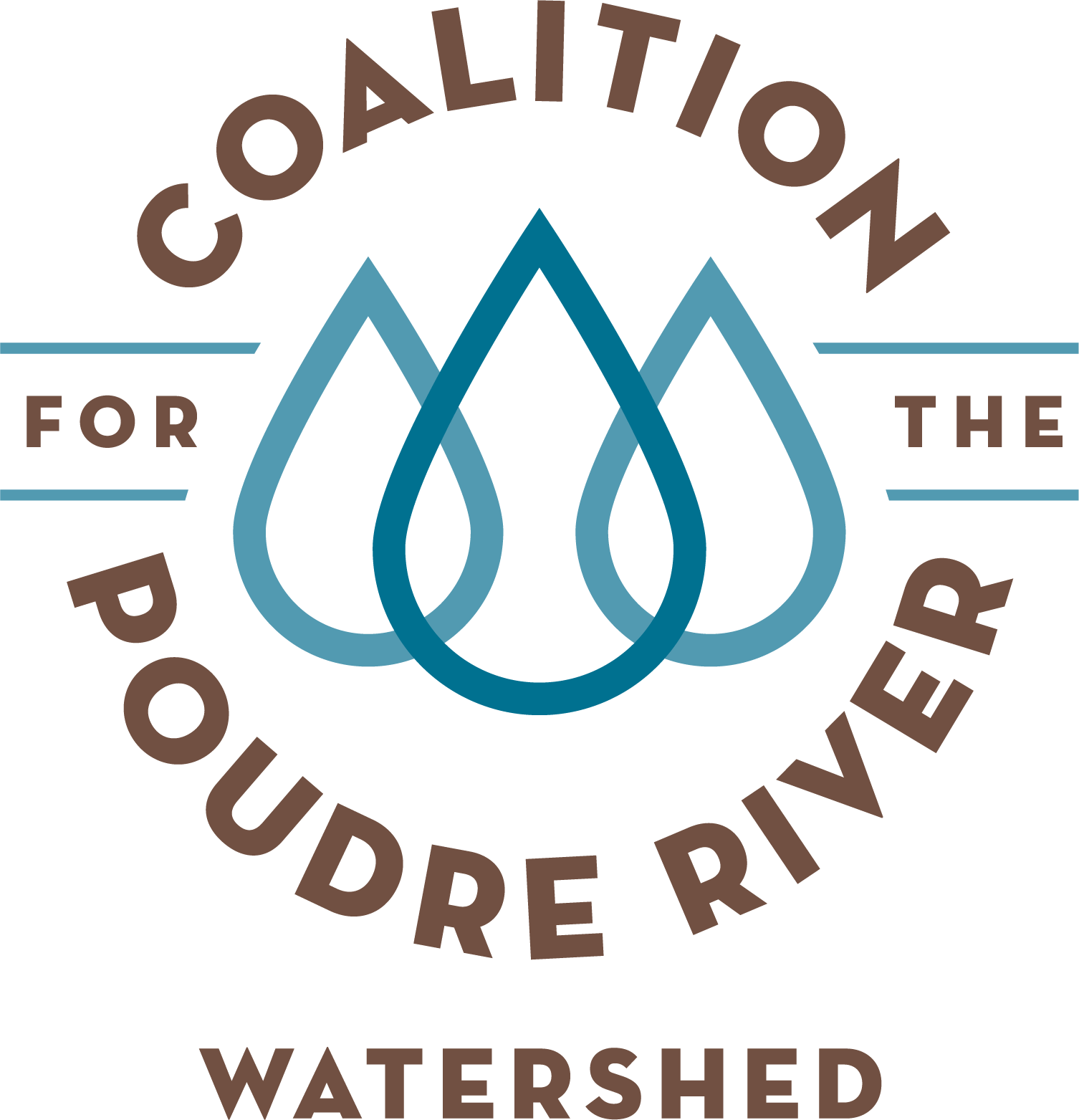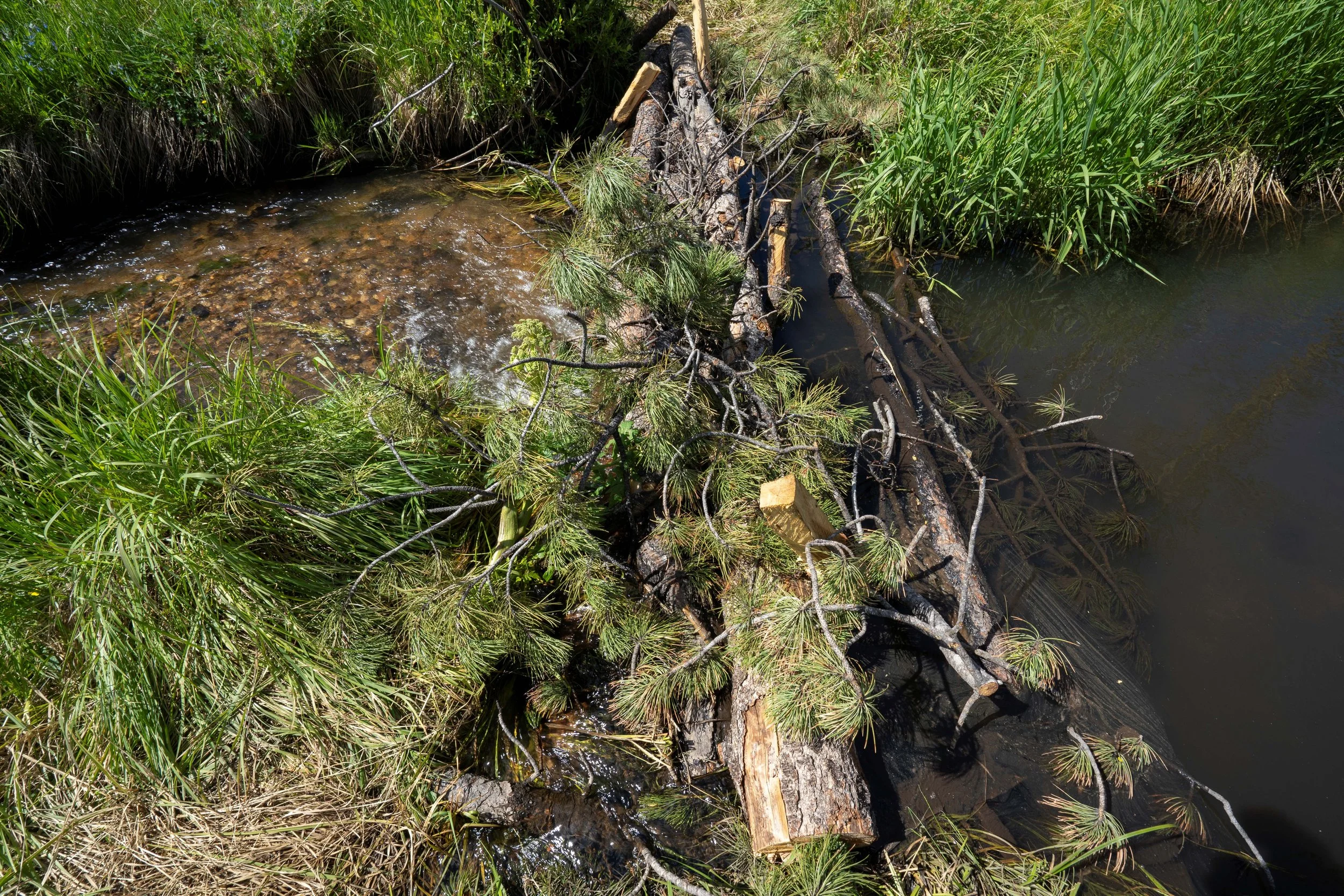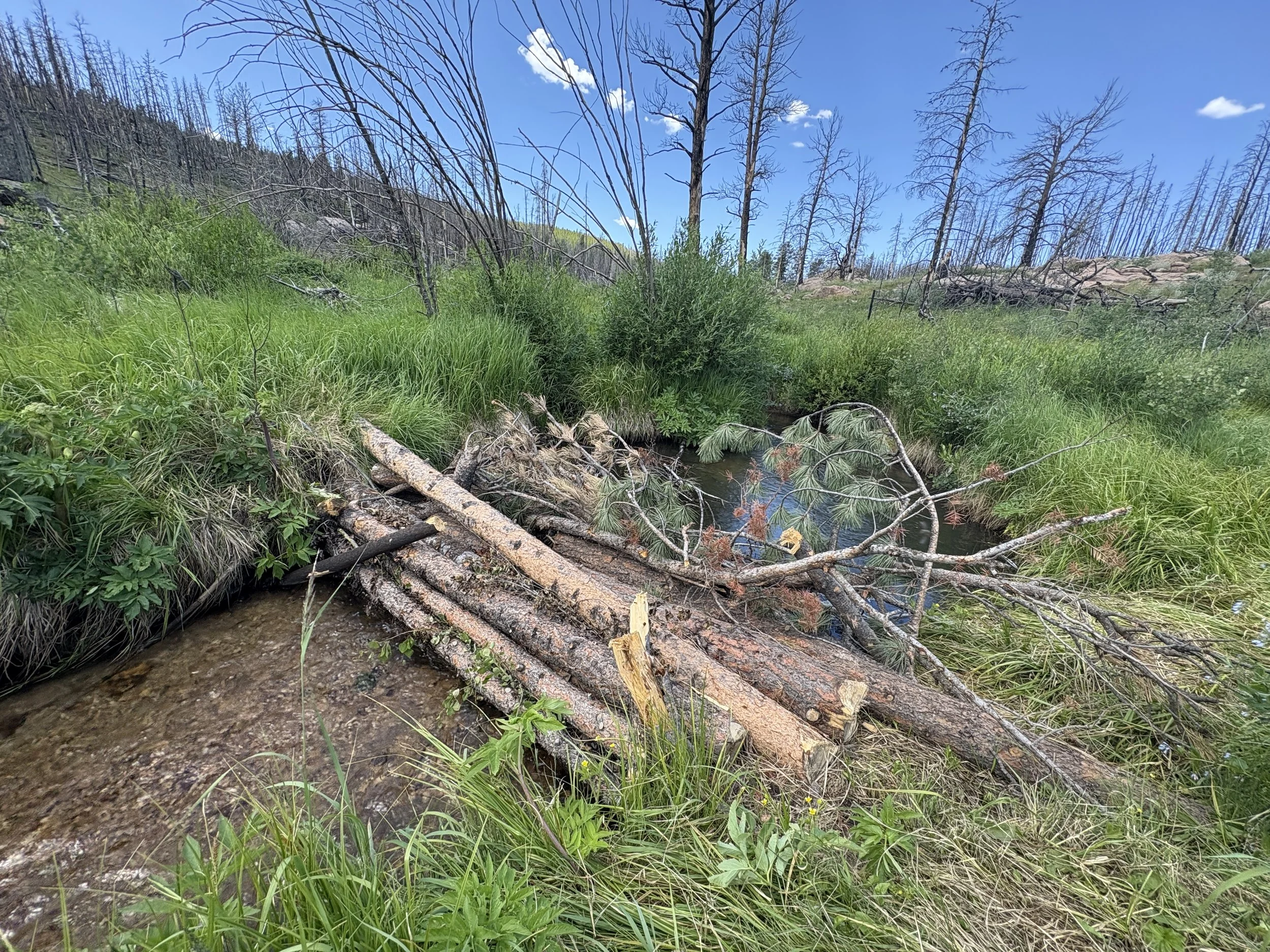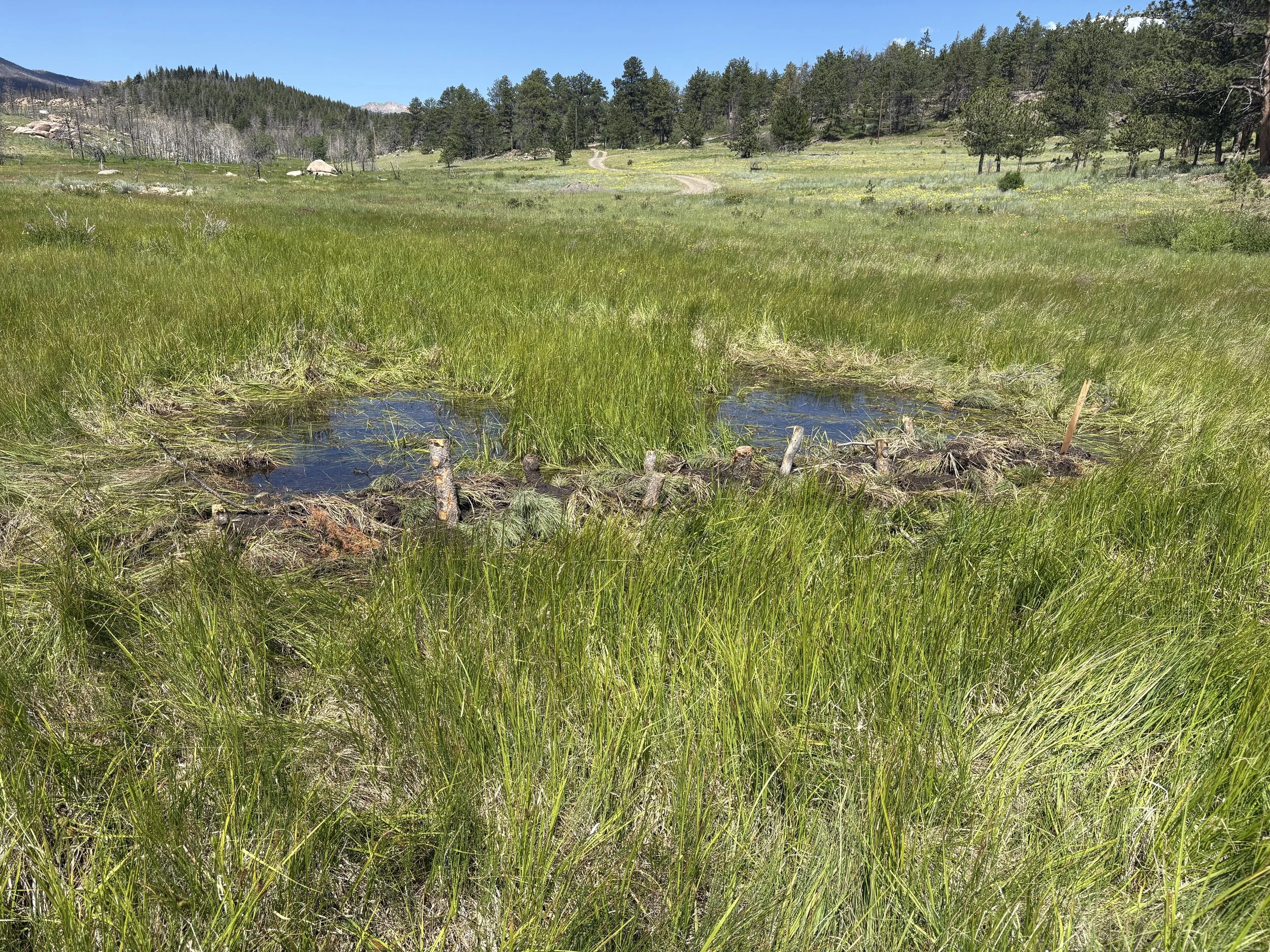Elkhorn Creek at Richarz
Cameron Peak Post-Fire Restoration
Project Overview
This 142.5-acre project area on private land contains Elkhorn Creek, a perennial tributary to the Cache la Poudre River. This important tributary to the mainstem of the Cache la Poudre is currently experiencing significant incision and bank erosion due to increased post-fire flows and sediment yields. This site has seen large amounts of ash and debris during runoff, causing ponds to fill with sediment. A series of recently abandoned beaver dams, likely abandoned in the past 10-years, exist at the site. Riparian vegetation has been heavily grazed in the overbank areas, especially smaller willows that burnt during the fire and are more accessible to deer, elk, and moose in the area. Some overbank areas are transitioning into upland vegetative species due to channel incision and reduced overbank flows.
In 2022, we completed the Upper Elkhorn Creek project, just upstream of this project area. In 2025, we will complete this project as well as a project downstream of this site, creating landscape-scale resilience in the Elkhorn Creek Watershed.
Post-Fire Treatments
Log Structures – Large, woody material, harvested on-site, will be placed and interlocked in the channel to increase hydraulic roughness, reduce flow velocities, and enhance sediment deposition. Log Structures provide opportunity for sediment storage behind the structures while promoting aquatic habitat complexity and additional wood recruitment to the river system. They can also enhance nutrient uptake and riparian health by increasing groundwater exchange between the channel and floodplain sediments.
Post-Assisted Log Structure (PALS) – On-site woody material of various sizes will be pinned together with untreated posts driven into the streambed to initiate and simulate natural wood accumulation. PALS provide opportunities for sediment storage behind the structures while promoting floodplain connectivity, additional wood recruitment, and riparian health. These features were field fit by the design team and placed to encourage sediment deposition. Placement utilized the relic beaver dams, where feasible, to reintroduce water areas behind the dams and promote riparian vegetation growth.
Beaver Dam Analogue (BDAs) – BDAs are channel-spanning, permeable structures with a uniform crest elevation constructed using woody debris and fill material to form a pond and mimic natural beaver dams (Wheaton et al., 2019). Woody material and sediment plugs are gathered on-site and matted together in layers to create a wide berm. Posts may be driven through the structure after reaching the final crest height in order to provide additional stability. BDAs mimic the form and function of natural beaver dams by creating a large backwater area behind the structure, which benefits habitat and floodplain connectivity. These features will be field fit by the design team.
Willow Wattles – Willow stakes are harvested off-site and bundled using biodegradable twine. These bundles are then partially buried and staked into areas with regular baseflow where willows would naturally grow. Willow wattles provide water quality improvements through rapidly establishing woody riparian vegetation to increase sediment storage and nutrient uptake.
Proposed features will be strategically placed at locations that will encourage surface and groundwater flow into historic alluvial flow paths whenever possible. In channel features will contribute to sediment deposition, nutrient uptake, and channel complexity while increasing wetland and aquatic habitat value.
A Unique Collaboration
CPRW and project partners are collaborating with the Larimer County Conservation Corps (LCCC) to implement wildfire mitigation work on the unburned part of this property, and to pair that forest management effort with stream restoration to enhance floodplain connectivity and the ability of the stream system to be resilient to increased levels of sediment and nutrient inputs post-fire.
Demonstrating paired forestry and stream restoration treatments on the landscape within both burned and unburned areas is an effective way to not only build resilience in the greater Poudre River watershed, but it also points the way toward greater integration of these types of treatments for enhancing the benefits of both forest management and stream restoration, as well as local utilization of wood products.
Project Goals
Improve water quality and ecological functioning by providing opportunities for sediment storage, nutrient uptake, and enhanced aquatic and riparian habitats.
Improve stream processes in Elkhorn Creek that align with downstream Wild and Scenic recreation, aesthetic, fisheries, and aquatic habitat values in the Cache la Poudre River.
Use process-based restoration techniques to meet the project objectives.
Connect upstream project on Elkhorn Creek to improve landscape level riparian conditions.
Demonstrate paired forestry and stream restoration treatments on the landscape within both burned and unburned areas.
Project Collaborators
Ayres Associates (Design & Engineering)
AloTerra Restoration Services (Construction)
Larimer County Conservation Corps (LCCC) (Construction)
Colorado State University (Research & Monitoring)
Funder(s)
Colorado Department of Public Health and Environment (CDPHE)
Colorado Water Conservation Board (CWCB)
Great Outdoors Colorado - Colorado Youth Outdoors
Project Timeline
Completed - Summer/Fall 2025








